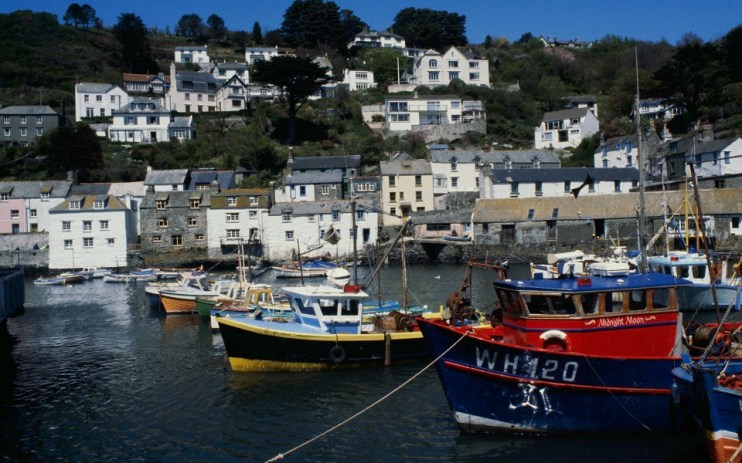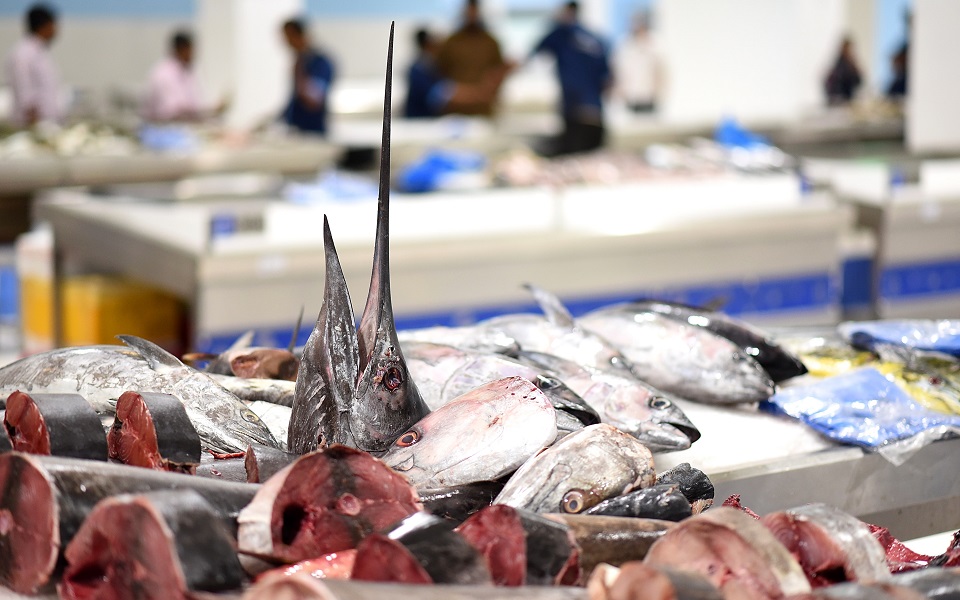We need to eat more seafood – here’s how

Between the cost of living crisis, the imminent environmental collapse and the obesity epidemic, the UK has got its work cut out when it comes to food. Part of the solution, according to a new white paper, is to get people to eat more seafood.
The government will invest £24 million in “seafood science and innovation” as part of the £100 million UK Seafood Fund after concluding that “seafood is… [a] lower-carbon and healthy source of protein which can grow sustainably”.
The problem is that while many people are willing to order cod and chips at the local chippie, or turbot at a nice restaurant, relatively few will buy them to prepare at home.
“It’s simple: seafood is incredibly expensive,” says Richard Corrigan, owner of restaurants including Bentley’s Oyster Bar & Grill. “Go buy a portion of cod and you’ll see. I live in Muswell Hill and if I go down to the fishmongers to buy fish for three or four people you’re talking £60 – the same price as beef if not more.”

The reasons for this are fairly obvious – fishing is an expensive business, from getting it out of the sea to getting it onto people’s plates in time. “Meat protein is enhanced by hanging,” says Corrigan. “Lamb and pork for 7 days, beef for up to 40 days. But fish needs to get from the boat to your plate almost immediately, which is a logistical nightmare.”
So what’s the solution? “We need to have a lot more wet markets, and for councils to make things much easier for fishermen. We need more places where you can bring your wares and sell them directly to your customers. When you have too many links in the chain the price jumps massively.”
Paul Ainsworth, the chef behind Number 6 in Padstow, Cornwall, says the immediacy of fish is a benefit as well as a hindrance. “To me it’s one of the closest ways of getting close to mother nature – there’s no processing it, there’s no abattoir. But that means there’s more to do at home.”
Another stumbling block for fish is that most people feel relatively comfortable around a chicken carcass, but stick a whole cod on their kitchen counter and many will struggle. “There’s a bit of laziness,” says Ainsworth. “People will eat it in restaurants where someone will do all the preparation for you. But it’s also an education thing and a branding thing. People weren’t interested in eating herring but when someone rebranded it as sardines they went wild for it. In Scandinavia people love to eat king crab but we have the very similar spider crab and nobody is interested.
“It’s not just a fish problem – we have amazing game here but nobody thinks ‘I’m going to go out and buy a partridge tonight’.”
One positive sign is the increased awareness of the importance of a healthy diet. “My dad thought there was something wrong with people who exercised,” says Ainsworth. “Now everybody is so much more aware of their health and the importance of diet, and this is bound to have a knock-on effect in seafood sales.”
Both Ainsworth and Corrigan agree that supermarkets are partly to blame in all this, putting pressure on suppliers and selling “ghastly, week old” produce to customers.
So take a trip to the local fishmonger and stock up on the ingredients for these two recipes. As far as sustainable protein goes, it’s a whole lot more appetising than insects.
Two top summer recipes with seafood: Paul Ainsworth of Padstow’s Caffè Rojano and Richard Corrigan of Bentley’s offer recipes perfect for the season
Ingredients for BBQ mackerel bruscetta
INGREDIENTS
• 4 large mackerel fillets (pin boned)
• 4 slices sourdough bread
• Olive oil for drizzling
SALSA
• 2 spring onions sliced thin
• ½ red chilli de seeded and chopped
fine
• ½ green chilli de seeded and
chopped fine
• 10g coriander chopped
• 6 basil leaves torn or chopped into
strips
• 20 cherry tomatoes cut into halves
• ½ red onion sliced thin
• Sea salt and pepper
CEVICHE PICKLE
• 500ml pomace/olive oil
• 100ml white wine vinegar
• 100ml rice wine vinegar
• 1tbsp sesame oil
METHOD
- Combine all the ceviche pickle ingredients together and whisk well, set aside.
- Season the mackerel fillets with salt and pepper and spoon over the pickle and set aside for 5 minutes before BBQing.
- Combine all the salsa ingredients in a bowl and season with salt and pepper, add a drizzle of the ceviche pickle and mix well.
- Drizzle some olive oil over the bread slices and add a pinch of sea salt then place your sourdough onto the BBQ and cook on both sides until evenly charged and crispy.
- While cooking the sourdough, place the mackerel fillets skin side down and cook for about 2/3 minutes then turn and finish the cooking on the flesh side for no more than 10 seconds!
- Place your salsa on top of you charred sourdough then finish with your barbequed mackerel fillets.
Bentley’s fish pie by Richard Corrigan
INGREDIENTS
• 1kg fish fillets, including salmon, smoked haddock and white fish such as pollack and haddock (the smoked haddock trimmings will be used in the sauce)
• 1.5kg floury potatoes
• 2 egg yolks
FOR THE SAUCE
• 100g butter, plus a little extra for sweating
the vegetables
• 1 onion, diced
• 2 cloves garlic, crushed
• a sprig of thyme
• 150ml of white wine
• smoked haddock trimmings
• 2 pints milk
• 100g plain flour
• 1 tablespoon English mustard
• a handful of chives and parsley chopped
TO FINISH
• a little lemon juice
• a handful of fresh breadcrumbs
• a little grated parmesan
METHOD
- Remove the skin from the fish and cut into bite-sized pieces, reserving the skin of the smoked haddock for the sauce.
- To start the sauce, heat a little butter in a saucepan, add the onion, garlic and thyme and sweat until softened. Add the white wine and the smoked haddock trimmings and cook for a few minutes to burn off the alcohol. Add the milk and bring to just under the boil, then take the pan from the heat, pass the contents through a sieve into a bowl and keep hot.
- Melt the 100g butter in a heavy saucepan, add the flour and cook over a low heat, stirring for 5 minutes. Pour the hot infused milk into the pan and whisk vigorously until the mixture is smooth and thick. Taste to make sure you can’t taste the flour. If you can, let it cook gently for a little longer.
- Whisk in the mustard and add the chives and parsley. Check the seasoning and add salt and pepper and more mustard if you wish. Leave to cool down while you make the mash — it is best not to assemble the pie with hot sauce as it will cook the fish too quickly.
- Preheat the oven to 180°C/Gas 4.
- Peel the potatoes and cook in boiling salted water until tender. Drain in a colander and allow the potatoes to steam for a couple of minutes to rid them of excess moisture, then mash and season with salt and pepper. Add the egg yolks.
- Scoop the mash into a piping bag — it needs to be hot in order to pipe easily.
- To assemble, spoon a little of the sauce into the bottom of a pie dish. Arrange a selection of fish on top of the sauce. Season with salt and pepper and a squeeze of lemon juice.
- Completely cover with sauce, then pipe or spoon on the mash. Mix together the breadcrumbs and parmesan and sprinkle over the top.
- Place the pie on a baking sheet and cook for around 20 minutes until the top is golden brown. Serve immediately
